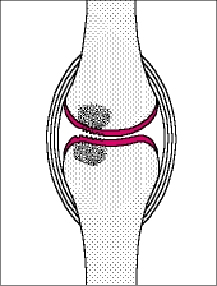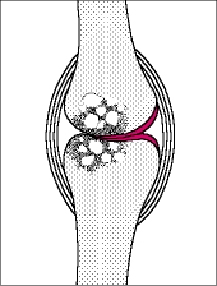Various Stages of Arthritis
 |
Early Stage
Osteoarthritis always starts with damage to the cartilage that covers the joint surfaces.
At first, this cartilage damage is often limited to a small area of perhaps half a square inch. In addition, the damage is still superficial. Within a short time, x-ray films of the joint show an increase in the density of the bone. This always occurs in bone areas that are located directly beneath the damaged cartilage.
These additional changes in the bone are a critical sign that early-stage osteoarthritis has developed. Without the changes to the bone, there is only “cartilage damage,” but no “osteoarthritis.”
Therefore, osteoarthritis always means cartilage damage with changes to the bone.
 |
Late Stage
Many years may separate “early stage” and “late stage” osteoarthritis. Therefore, most osteoarthritis patients find themselves somewhere in between. The changes to their joints are more pronounced than in the early stage, but still less than in the late stage.
In the late stage, the joint cartilage in the affected area is not only diseased and damaged, but completely eroded and worn away. Without that protective covering, opposite bones rub directly against each other. This is also called “bone-to-bone contact.” X-rays of late stage osteoarthritis show the absence of normal cartilage and exhibit direct contact between bones.
The bone itself has also changed in relation to the early stage. X-rays clearly show them to be denser and harder. The joints have developed large edges that are bony and jagged. These bony outgrowths (“osteophytes”) broaden the entire joint. The resulting deformity is outwardly apparent to the patient. The affected joints appear larger and expanded. Bony spurs can also touch each other during certain movements, causing additional pain.

